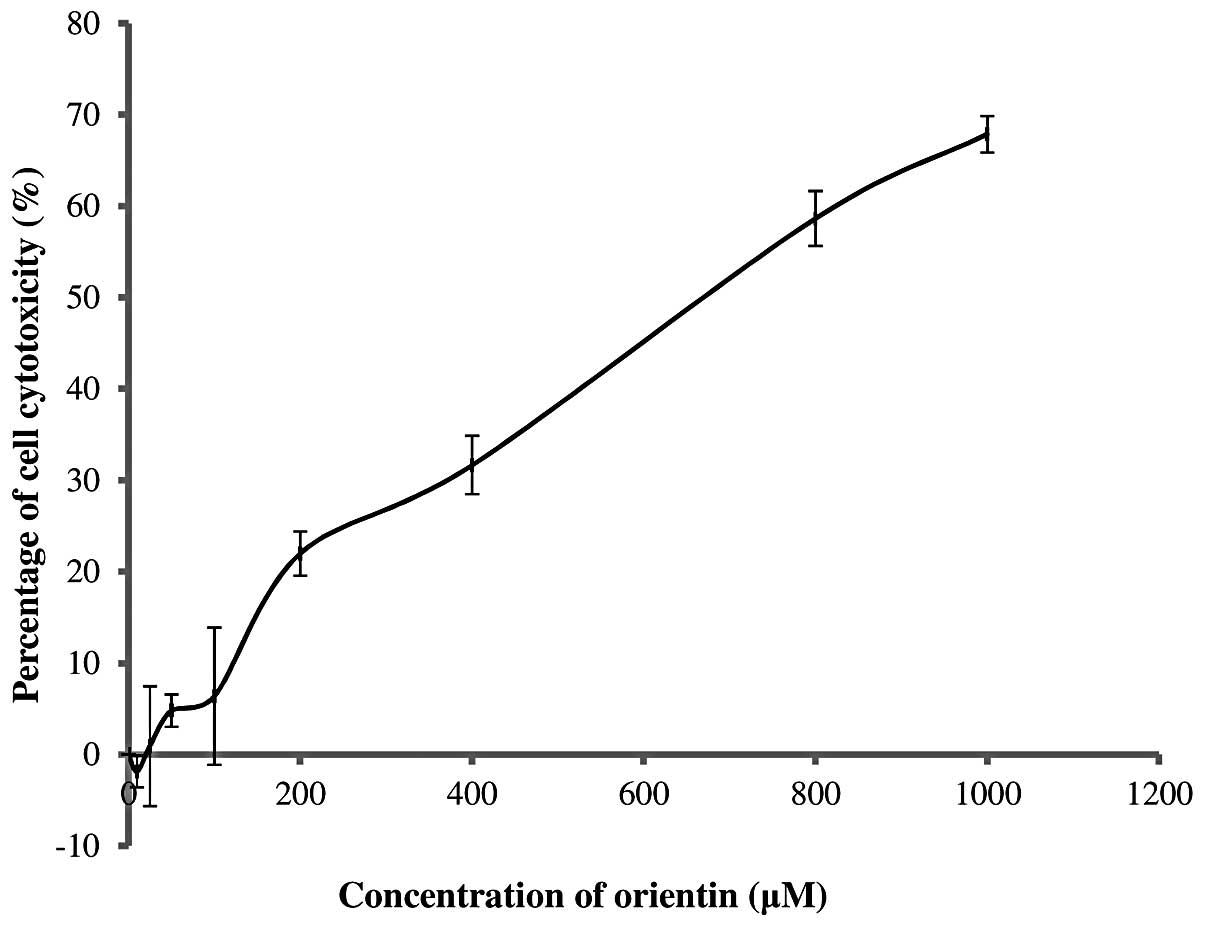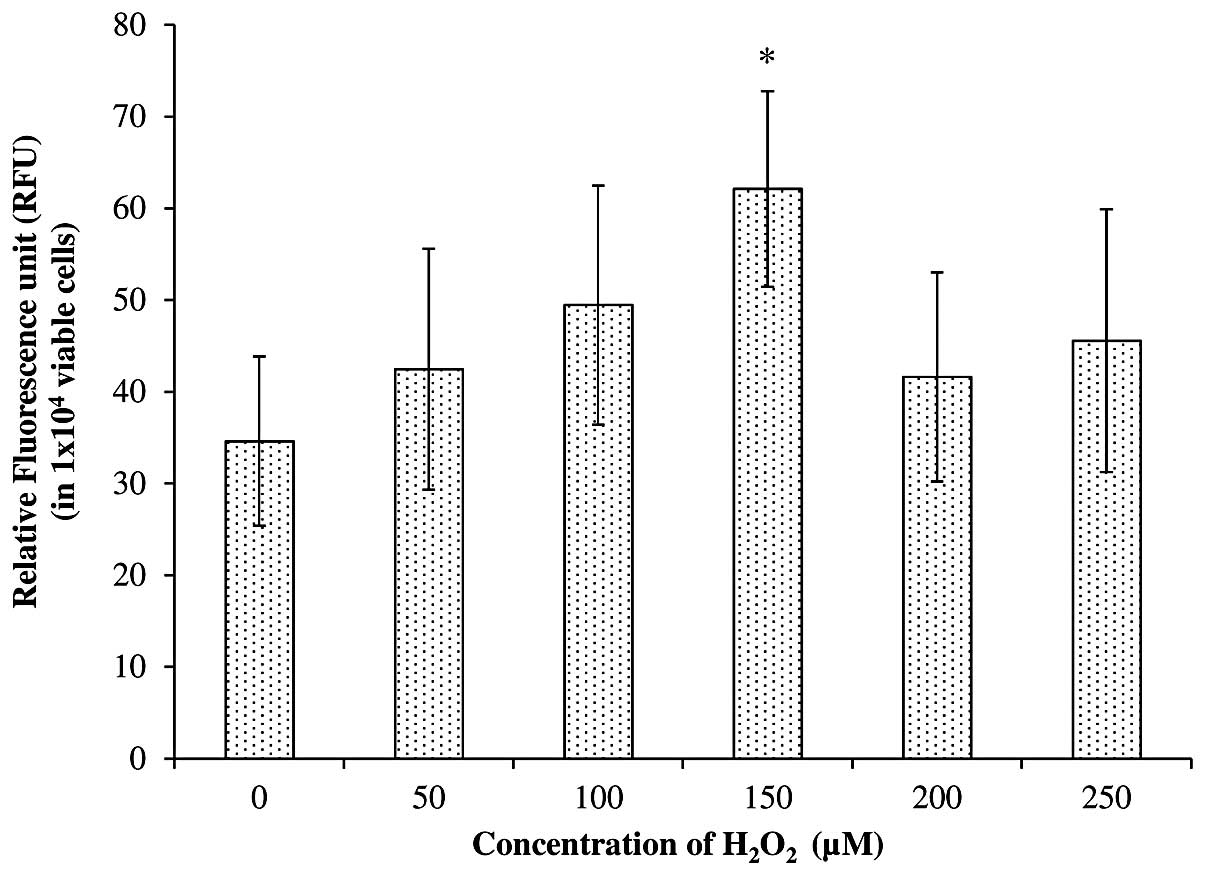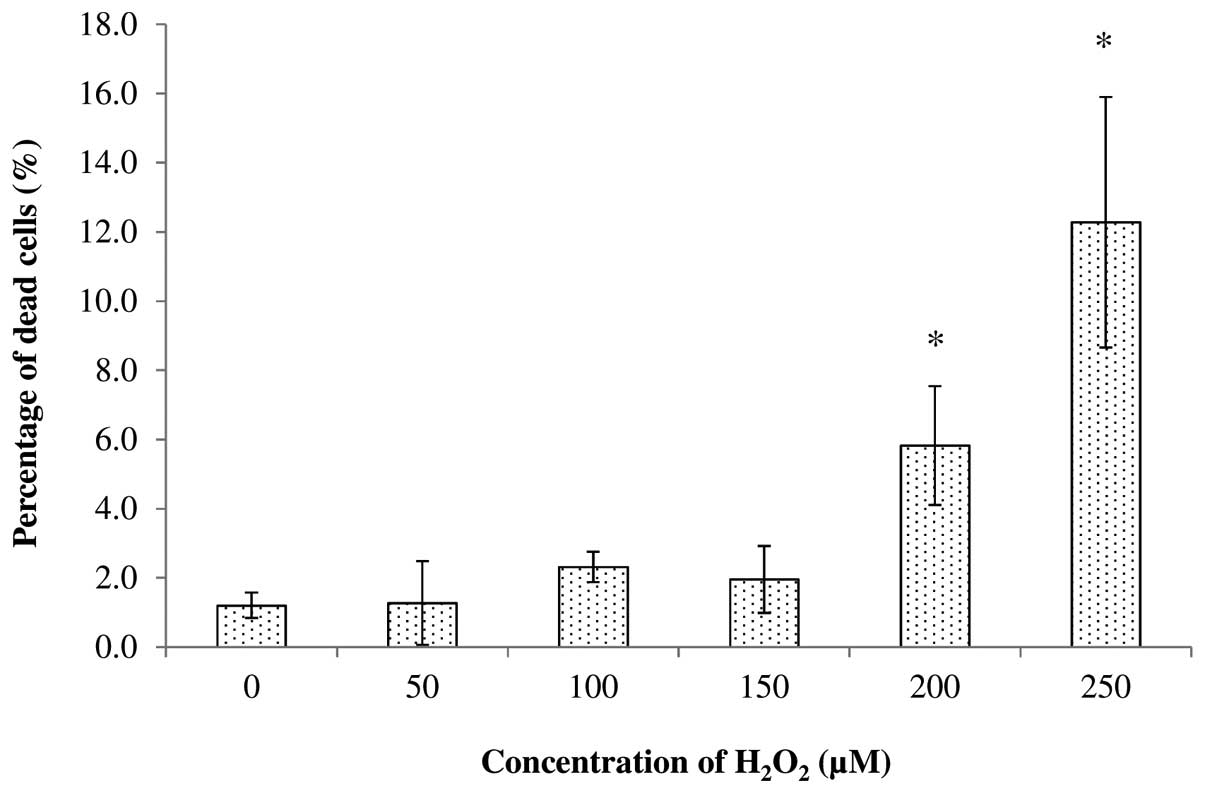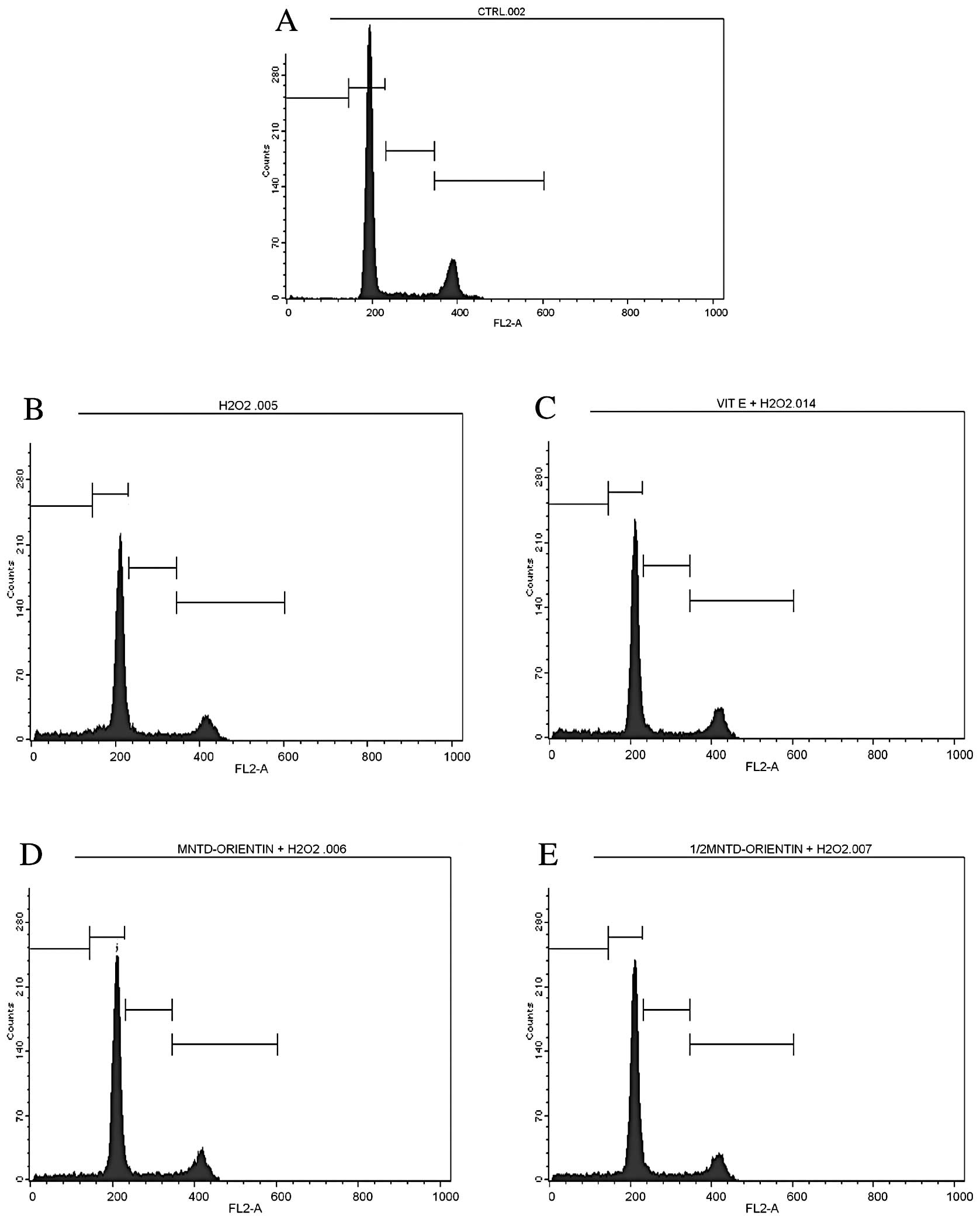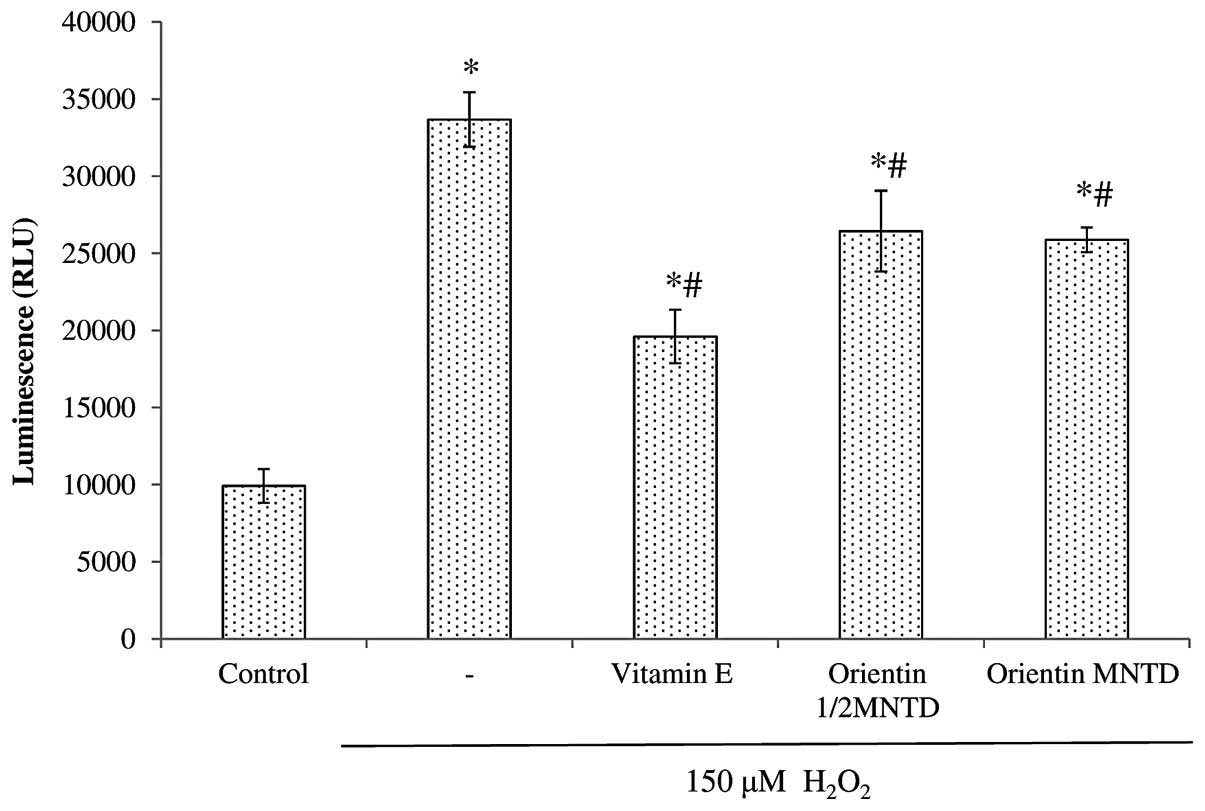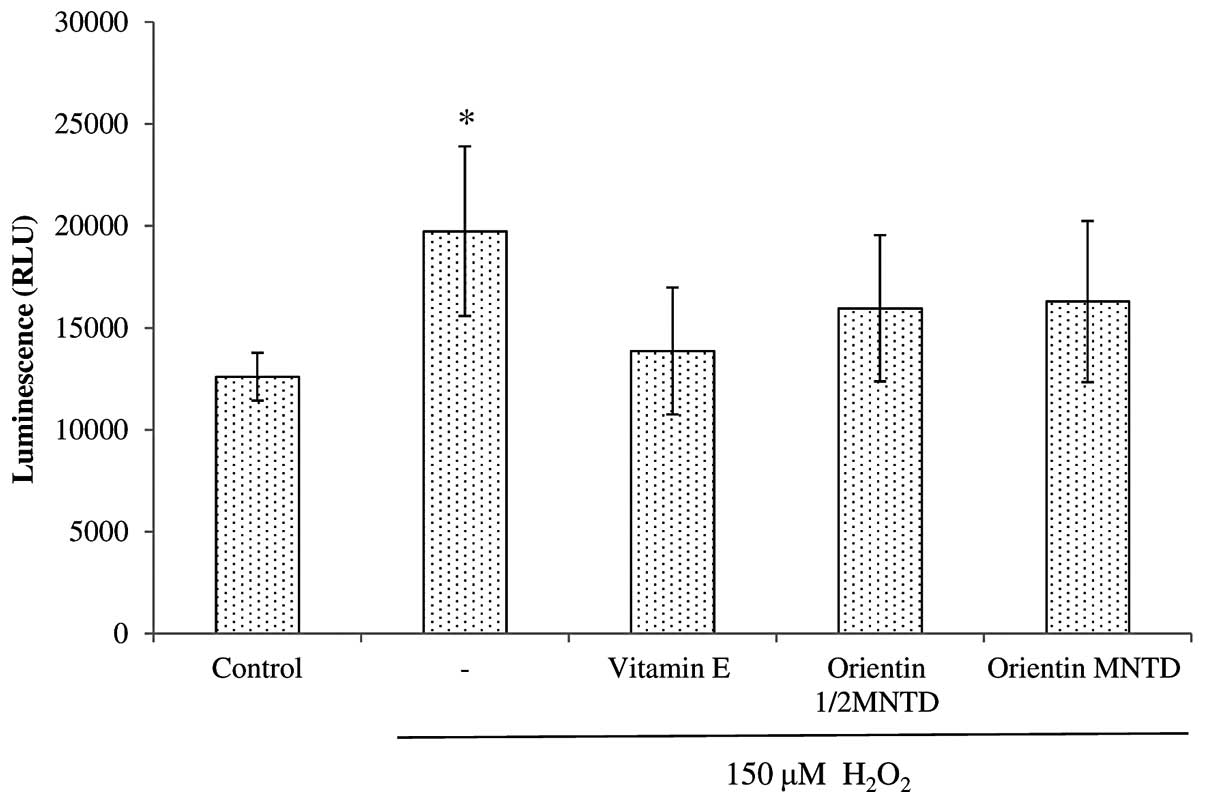|
1
|
Kolominsky-Rabas PL, Sarti C, Heuschmann
PU, Graf C, Siemonsen S, Neundoerfer B, Katalinic A, Lang E,
Gassmann KG and von Stockert TR: A prospective community-based
study of stroke in Germany - the Erlangen Stroke Project (ESPro):
incidence and case fatality at 1, 3, and 12 months. Stroke.
29:2501–2506. 1998. View Article : Google Scholar : PubMed/NCBI
|
|
2
|
Samsa GP, Bian J, Lipscomb J and Matchar
DB: Epidemiology of recurrent cerebral infarction: a medicare
claims-based comparison of first and recurrent strokes on 2-year
survival and cost. Stroke. 30:338–349. 1999.PubMed/NCBI
|
|
3
|
Leppälä JM, Virtamo J, Fogelholm R,
Albanes D and Heinonen OP: Different risk factors for different
stroke subtypes: association of blood pressure, cholesterol, and
antioxidants. Stroke. 30:2535–2540. 1999.PubMed/NCBI
|
|
4
|
Mattson MP: Neuronal life-and-death
signaling, apoptosis, and neurodegenerative disorders. Antioxid
Redox Signal. 8:1997–2006. 2006. View Article : Google Scholar : PubMed/NCBI
|
|
5
|
Emerit J, Edeas M and Bricaire F:
Neurodegenerative diseases and oxidative stress. Biomed
Pharmacother. 58:39–46. 2004. View Article : Google Scholar
|
|
6
|
Vrinda B and Uma Devi P: Radiation
protection of human lymphocyte chromosomes in vitro by orientin and
vicenin. Mutat Res. 498:39–46. 2001. View Article : Google Scholar : PubMed/NCBI
|
|
7
|
Lu N, Sun Y and Zheng X: Orientin-induced
cardioprotection against reperfusion is associated with attenuation
of mitochondrial permeability transition. Planta Med. 77:984–991.
2011. View Article : Google Scholar : PubMed/NCBI
|
|
8
|
Pusztai R, Béládi I, Bakai M, Mucsi I and
Kukán E: Study on the effect of flavonoids and related substances.
I The effect of quercetin on different viruses. Acta Microbiol Acad
Sci Hung. 13:113–118. 1966.PubMed/NCBI
|
|
9
|
Korkina LG and Afanas’ev IB: Antioxidant
and chelating properties of flavonoids. Adv Pharmacol. 38:151–163.
1997. View Article : Google Scholar : PubMed/NCBI
|
|
10
|
Matsuo M, Sasaki N, Saga K and Kaneko T:
Cytotoxicity of flavonoids toward cultured normal human cells. Biol
Pharm Bull. 28:253–259. 2005. View Article : Google Scholar : PubMed/NCBI
|
|
11
|
Hassan HM and Fridovich I: Regulation of
the synthesis of superoxide dismutase in Escherichia coli.
Induction by methyl viologen. J Biol Chem. 252:7667–7672.
1977.PubMed/NCBI
|
|
12
|
Yoshpe-Purer Y, Henis Y and Yashpe J:
Regulation of catalase level in Escherichia coli K12. Can J
Microbiol. 23:84–91. 1977. View
Article : Google Scholar
|
|
13
|
An JH and Blackwell TK: SKN-1 links C.
elegans mesendodermal specification to a conserved oxidative
stress response. Genes Dev. 17:1882–1893. 2003.PubMed/NCBI
|
|
14
|
Inoue H, Hisamoto N, An JH, Oliveira RP,
Nishida E, Blackwell TK and Matsumoto K: The C. elegans p38
MAPK pathway regulates nuclear localization of the transcription
factor SKN-1 in oxidative stress response. Genes Dev. 19:2278–2283.
2005.
|
|
15
|
Sablina AA, Budanov AV, Ilyinskaya GV,
Agapova LS, Kravchenko JE and Churnakov PM: The antioxidant
function of the p53 tumor suppressor. Nat Med. 11:1306–1313. 2005.
View Article : Google Scholar : PubMed/NCBI
|
|
16
|
Foreman J, Demidchik V, Bothwell JH,
Mylona P, Miedema H, Torres MA, Linstead P, Costa S, Brownlee C,
Jones JD, et al: Reactive oxygen species produced by NADPH oxidase
regulate plant cell growth. Nature. 422:442–446. 2003. View Article : Google Scholar : PubMed/NCBI
|
|
17
|
Geizst M and Leto TL: The Nox family of
NAD(P)H oxidases: host defense and beyond. J Biol Chem.
279:51715–51718. 2004. View Article : Google Scholar : PubMed/NCBI
|
|
18
|
Li J, Stouffs M, Serrander L, Banfi B,
Bettiol E, Charnay Y, Steger K, Krause KH and Jaconi ME: The NADPH
oxidase NOX4 drives cardiac differentiation: Role in regulating
cardiac transcription factors and MAP kinase activation. Mol Biol
Cell. 17:3978–3988. 2006. View Article : Google Scholar : PubMed/NCBI
|
|
19
|
Sauer H, Rahimi G, Hescheler J and
Wartenberg M: Role of reactive oxygen species and
phosphatidylinositol 3-kinase in cardiomyocyte differentiation of
embryonic stem cells. FEBS Lett. 476:218–223. 2000. View Article : Google Scholar : PubMed/NCBI
|
|
20
|
Ushio-Fukai M: Localizing NADPH
oxidase-derived ROS. Sci STKE. 2006:re82006.PubMed/NCBI
|
|
21
|
Cai H: Hydrogen peroxide regulation of
endothelial function: origins, mechanisms, and consequences.
Cardiovasc Res. 68:26–36. 2005. View Article : Google Scholar : PubMed/NCBI
|
|
22
|
Gechev TS and Hille J: Hydrogen peroxide
as a signal controlling plant programmed cell death. J Cell Biol.
168:17–20. 2005. View Article : Google Scholar : PubMed/NCBI
|
|
23
|
Whittemore ER, Loo DT, Watt JA and Cotman
CW: A detailed analysis of hydrogen peroxide-induced cell death in
primary neuronal culture. Neuroscience. 67:921–932. 1995.
View Article : Google Scholar : PubMed/NCBI
|
|
24
|
Satoh T, Sakai N, Enokido Y, Uchiyama Y
and Hatanaka H: Free radical-independent protection by nerve growth
factor and Bcl-2 of PC12 cells from hydrogen peroxide-triggered
apoptosis. J Biochem. 120:540–546. 1996. View Article : Google Scholar
|
|
25
|
Jacobson MD: Reactive oxygen species and
programmed cell death. Trends Biochem Sci. 21:83–86. 1996.
View Article : Google Scholar : PubMed/NCBI
|
|
26
|
Uberti D, Piccioni L, Colzi A, Bravi D,
Canonico PL and Memo M: Pergolide protects SH-SY5Y cells against
neurodegeneration induced by H2O2. Eur J
Pharmacol. 434:17–20. 2002. View Article : Google Scholar : PubMed/NCBI
|
|
27
|
Heo SR, Han AM, Kwon YK and Joung I: p62
protects SH-SY5Y neuroblastoma cells against
H2O2-induced injury through the PDK1/Akt
pathway. Neurosci Lett. 450:45–50. 2009. View Article : Google Scholar : PubMed/NCBI
|
|
28
|
Zhang L, Yu H, Sun Y, Lin X, Chen B, Tan
C, Cao G and Wang Z: Protective effects of salidroside on hydrogen
peroxide-induced apoptosis in SH-SY5Y human neuroblastoma cells.
Eur J Pharmacol. 564:18–25. 2007. View Article : Google Scholar : PubMed/NCBI
|
|
29
|
Tarozzi A, Morroni F, Hrelia S, Angeloni
C, Marchesi A, Cantelli-Forti G and Hrelia P: Neuroprotective
effects of anthocyanins and their in vivo metabolites in SH-SY5Y
cells. Neurosci Lett. 424:36–40. 2007. View Article : Google Scholar
|
|
30
|
Kwon SH, Kim JA, Hong SI, Jung YH, Kim HC,
Lee SY and Jang CG: Loganin protects against hydrogen
peroxide-induced apoptosis by inhibiting phosphorylation of JNK,
p38, and ERK 1/2 MAPKs in SH-SY5Y cells. Neurochem Int. 58:533–541.
2011. View Article : Google Scholar : PubMed/NCBI
|
|
31
|
Suematsu N, Hosoda M and Fujimori K:
Protective effects of quercetin against hydrogen peroxide-induced
apoptosis in human neuronal SH-SY5Y cells. Neurosci Lett.
504:223–227. 2011. View Article : Google Scholar : PubMed/NCBI
|
|
32
|
Elmore S: Apoptosis: a review of
programmed cell death. Toxicol Pathol. 35:495–516. 2007. View Article : Google Scholar : PubMed/NCBI
|
|
33
|
Shoulson I: Neuroprotective clinical
strategies for Parkinson’s disease. Ann Neurol. 32(Suppl):
S143–S145. 1992.
|
|
34
|
Li D, Wang Q, Yuan ZF, Zhang L, Xu L, Cui
Y and Duan K: Pharmacokinetics and tissue distribution study of
orientin in rat by liquid chromatography. J Pharm Biomed Anal.
47:429–434. 2008. View Article : Google Scholar : PubMed/NCBI
|
|
35
|
Schroeter H, Spencer JP, Rice-Evans C and
Williams RJ: Flavonoids protect neurons from oxidized
low-density-lipoprotein-induced apoptosis involving c-Jun
N-terminal kinase (JNK), c-Jun and caspase-3. Biochem J.
358:547–557. 2001. View Article : Google Scholar
|
|
36
|
Kang SS, Lee JY, Choi YK, Kim GS and Han
BH: Neuroprotective effects of flavones on hydrogen
peroxide-induced apoptosis in SH-SY5Y neuroblostoma cells. Bioorg
Med Chem Lett. 14:2261–2264. 2004. View Article : Google Scholar : PubMed/NCBI
|
|
37
|
Wang CN, Chi CW, Lin YL, Chen CF and Shiao
YJ: The neuroprotective effects of phytoestrogens on amyloid beta
protein-induced toxicity are mediated by abrogating the activation
of caspase cascade in rat cortical neurons. J Biol Chem.
276:5287–5295. 2001. View Article : Google Scholar : PubMed/NCBI
|
|
38
|
Woo M, Hakem R, Soengas MS, Duncan GS,
Shahinian A, Kagi D, Hakem A, McCurrach M, Khoo W, Kaufman SA, et
al: Essential contribution of caspase 3/CPP32 to apoptosis and its
associated nuclear changes. Genes Dev. 12:806–819. 1998. View Article : Google Scholar : PubMed/NCBI
|



